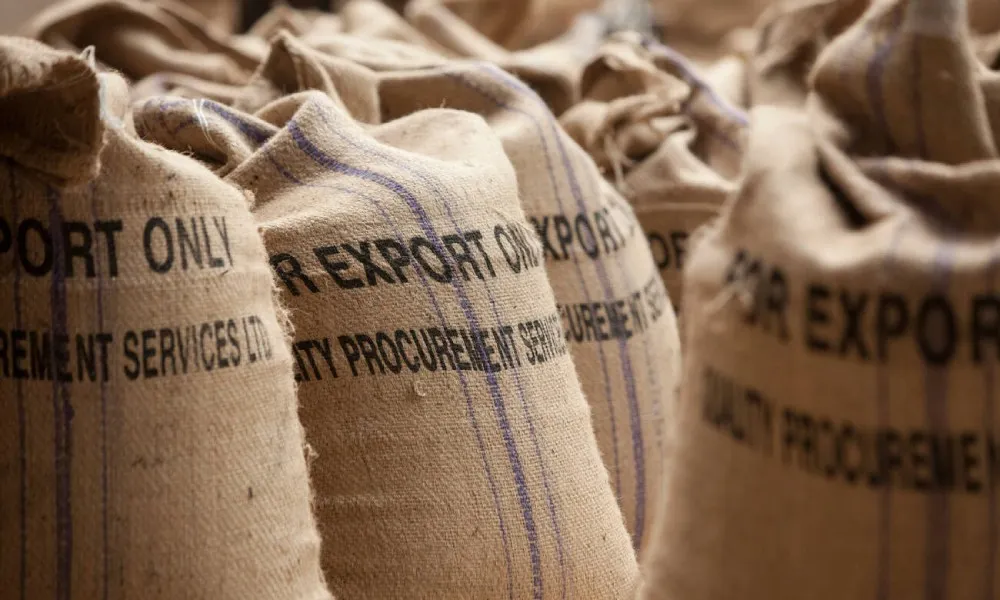Vietnam has long been recognized as one of the largest coffee producers in the world, ranking second only to Brazil in global coffee output. However, one lesser-known fact is that Vietnam primarily exports raw coffee (green coffee beans) rather than finished coffee products such as roasted coffee or instant coffee. So, why is there such a discrepancy? Let’s explore the factors behind Vietnam’s preference for exporting raw coffee over finished coffee products.

1. Higher Production Costs for Finished Coffee Products Compared to Raw Coffee
One of the main reasons why Vietnam exports more raw coffee than finished coffee is the higher production cost of finished coffee products. Turning coffee into finished goods like roasted coffee or instant coffee requires substantial investment in advanced equipment and skilled labor. Processes such as roasting, grinding, packaging, and storage all involve higher costs compared to simply exporting raw coffee beans.
Moreover, producing finished coffee products requires specialized facilities, warehouses for proper storage, and stringent quality control procedures. These factors make the initial investment more expensive and the ongoing operational costs significantly higher for coffee processing plants. This is a major barrier for many businesses within Vietnam’s coffee industry.
2. Lack of a Strong Domestic Consumption Market
Although domestic coffee consumption in Vietnam has steadily grown, the domestic market for finished coffee products is still limited. While Vietnam has a stable demand for coffee, most of the coffee consumed domestically is still raw coffee, with very little consumption of finished products like roasted or instant coffee. Therefore, coffee producers often focus on exporting raw coffee beans to international markets rather than expanding domestic consumption of processed coffee.
The domestic market is insufficient to sustain the growth of finished coffee product production. As a result, coffee producers in Vietnam often look to export raw coffee to larger markets like the United States, Europe, and China, which offers a more significant opportunity for revenue. The export market helps sustain the raw coffee supply chain, creating stable income for local coffee farmers and producers.
3. Raw Coffee Beans Are Easier to Export and Sell
Raw coffee beans (green coffee) have a longer shelf life and are easier to store compared to finished coffee products. Raw coffee beans require fewer special storage conditions, and they can be shipped around the world without much concern for quality deterioration. Additionally, when coffee is exported in its raw form, international companies can process and roast the coffee to meet local consumer preferences.
By exporting raw coffee beans, Vietnamese producers are able to target a broader international market where roasters in importing countries can handle the final processing, tailoring the product to regional tastes and reducing transportation costs. This gives Vietnamese raw coffee a strong competitive edge in the global market, as it can be easily incorporated into a wide range of coffee offerings.

4. Limited Processing Technology and Marketing in Vietnam
Another crucial factor is the limited processing technology and marketing capacity for finished coffee products in Vietnam. Domestic coffee producers and processors have not yet developed the advanced technology needed to produce finished coffee products with consistent quality that can compete on a global scale. Producing high-quality roasted coffee or instant coffee products requires significant expertise and investment in equipment, which many local producers are not yet able to afford.
Moreover, the marketing of processed coffee products, such as roasted beans or instant coffee, to build a strong brand presence in international markets is still underdeveloped. Conversely, raw coffee beans have fewer marketing barriers, and their exportation focuses more on bulk sales to roasters around the world rather than branding and consumer-oriented marketing.
5. Lower Competitive Advantage in Finished Coffee Markets
Although Vietnam’s finished coffee products are gradually being exported and are available in select markets, the overall competitiveness of Vietnam’s finished coffee products remains low compared to countries like Brazil or Colombia, where the coffee industry is highly advanced in both processing and branding.
Raw coffee from Vietnam remains competitive in international markets due to its affordable price and large production volume. Large markets like the U.S., Europe, and China continue to be major importers of Vietnamese raw coffee, maintaining the country’s strong position as a leading coffee exporter. The large-scale production of raw coffee ensures stable output and opportunities for growth in the export market.
Conclusion
The fact that Vietnam exports more raw coffee than finished coffee products can be explained by several factors, ranging from higher production costs, the limited domestic consumption market, and the lack of advanced processing technology to issues with branding and marketing. However, with sustainable development in the coffee sector and a growing global demand for finished coffee products, Vietnam has the potential to increase its exports of processed coffee in the future. By investing in processing technologies and better marketing, Vietnam can significantly improve the value of its coffee exports and position itself more competitively in the global market for finished coffee products.



